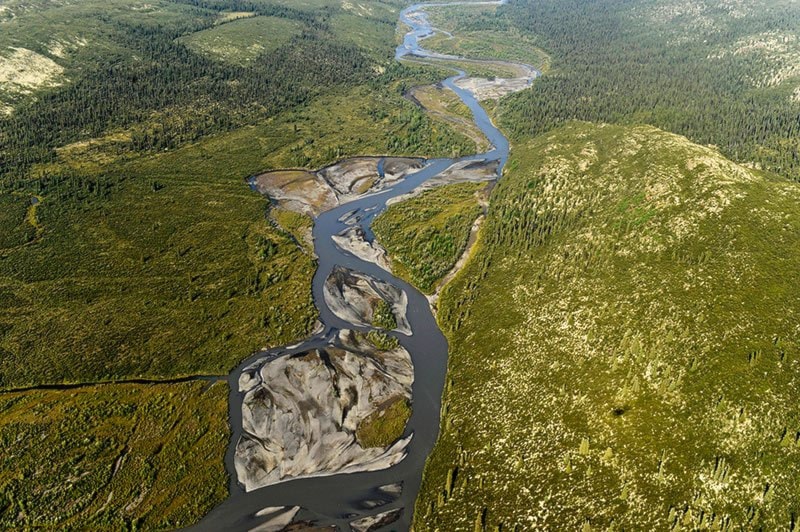The battle for control of the Peel Watershed is heating up after planners opened the process to the public last month.
Public input on the Peel River Planning Committee’s three proposals was solicited through open houses in Yukon communities. It was later extended to include letters received after the February 28 deadline.
The general public and stakeholders were asked to evaluate the plans, which ranged from the most protected (scenario one) to the least protected (scenario three).
That democratic process hasn’t been easy on the independent committee. Many written responses posted on its website have been sharply critical.
If anything, the letters demonstrate who’s really got their sights set on the Peel.
The Yukon government’s Energy, Mines and Resources Department took 11 pages to note factual errors in the committee’s current plan. And it defended mineral claimants, who might be affected by efforts to protect the region.
The committee failed to deal with access issues, leaving them to future subregional zoning plans, said the department.
“Deferring access questions to subregional or district level planning is ‘passing the buck,’” wrote the department.
“There has to be all-season access identified in the plan to enable certainty for exploration and development in the future,” it says.
None of the existing scenarios suggest reasonable access options, said the department.
Energy, Mines and Resources also defended quartz claims and coal leases in the Peel, most of which would be withdrawn or put under special management areas.
“This poses problems for these claims to be accessed for future exploration and development.”
The proposals gloss over the Peel’s high mineral potential, said department officials.
The committee’s failure to pencil in access roads also nettled the Yukon’s Environment Department.
Managing wildlife around access roads is a complex challenge for the government, and roads will compromise the ecological integrity of the Peel, wrote the department.
All three plans are faulty, wrote Darrell Pasloski, the Yukon’s Conservative candidate in the last federal election.
The plans commend a considerable portion of the Peel to protection even though more than $100 million has been invested in mining claims in the region, said Pasloski, writing as president of the Conservative Association of Yukon.
The committee must draft its next plan with more focus on economic values, he added.
The planners never sought industry input before drafting its plans, wrote Vancouver-based Tarsis Capital Corp., a mining investment firm with a stake on the Bonnet Plume River. It said it has invested $1 million in the region.
The committee’s maps aren’t detailed enough for Tarsis to figure out whether its claims have fallen under protected land, said the company.
Also, road access to the sites appears to be limited.
The third scenario is, so far, the best plan, wrote Chevron Canada Ltd., which has an interest in the Crest iron-ore deposit in the Peel watershed.
However, though that plan offers the most freedom for resource developers, it is still flawed, Chevron noted.
The Crest is located in the southeast corner of the watershed, one of its most remote and inaccessible regions.
Rail access through the region towards the southwest would be essential to exploit the iron ore deposit, said Chevron.
A pipeline corridor from the Mackenzie Gas Project in the Northwest Territories to the Peel Plateau and the Eagle Plains Basin should also be included in the plan, it said.
The committee went too far in assuming that mining development and other interests can’t co-exist, said Stephen Quin, president of Capstone Mining Corp., which owns the Minto Mine near Pelly Crossing.
The committee took little or no account of the implications for mine-claim holders in the Peel, “which could result in massive compensation to those with economic interests in the Peel,” wrote Quin.
The pro-conservation lobby also recruited some heavy-hitters to voice support for environmental protection.
The Yukon to Yellowstone Conservation Initiative, which aims to create a 3,200-kilometer-long park corridor from the Peel to the Rocky Mountains of Wyoming, support scenario two.
The Peel is the “northern anchor” of the Yukon to Yellowstone plan, said director of conservation Wendy Francis.
The initiative lobbies for the creation of a conservation region running along the northern length of the Rocky Mountains that will serve to protect the migratory patterns of large mammals such as grizzly bears.
Contact James Munson at
jamesm@yukon-news.com.
